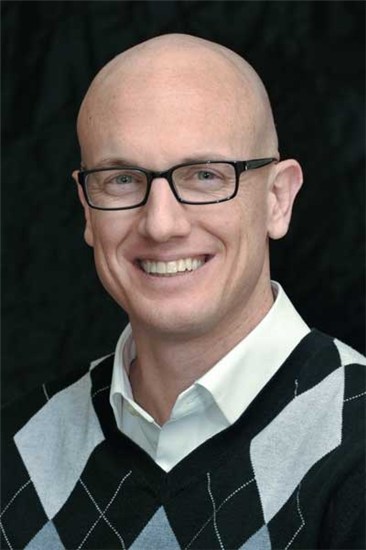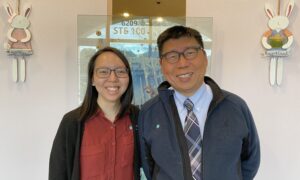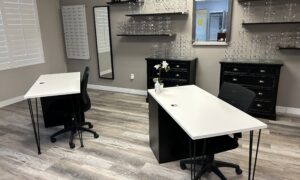By Chad Fleming, OD, FAAO
March 16, 2016

SYNOPSIS
Diversifying investments is a key to a secure retirement with financial freedom. See how to set goals and follow a timeline to get where you want to be—with your practice and your life.
ACTION POINTS
IDENTIFYASSETS. Read about strategies for investing, and hire a financial advisory firm to guide you.
SELECT IDEAL INVESTMENTS. Look for investments that generate income without having to constantly monitor and make adjustments to level of investment.
REVIEW WITH ADVISER. Get quarterly reviews with weekly/monthly portfolio adjustments, and plan ahead for new investment opportunities.
There are a variety of ways to save for your retirement, but it’s important to remember not just to save and invest, but to invest in a diversity of assets. Doing so has given me greater financial security, and greater options to decide how to spend the additional money.
There are three pillars of financial wellness: health of the practice, owning practice real estate and outside investments or businesses. Diversifying your investments means also investing in assets outside of the practice, in addition to the practice itself.
Protect Yourself Financially
There are three pillars of financial management diversification: owning businesses (owning an optometry practice falls in this category), owning real estate (that is generating more income than cost) and investment vehicles such as stocks, bonds, metals, jewels, art, etc.
Diversification is extremely important because it protects the optometrist from the fluctuations of one particular area of investing. For instance, if all of your dollars are in the practice, and you experience a change in patient flow due to large companies changing insurances at the beginning of the year, then you will see your business take a direct reduction in profits.
If your reimbursement from one vision benefit company changes by $20 then you will automatically lose $20 in net dollars (assuming that your net dollars last year was equal to or greater than $20 last year) to see the same patient compared to the year before. When you invest 100,000 into your practice, and $100,000 into the stock market, then there is balance. Not enough balance, but there is balance, and you are not as leveraged as you would be putting all $200,000 in your practice.Imbalance is having 100 percent of a $300,000 investment. Balance is having $300,000 in three different investments. As young ODs, it is difficult to structure this kind of investing strategy because debt is usually the factor that sets everything off balance. A prudent OD can begin a diversified model much earlier than they think; just start very small and build principals first.
Diversify Investments Early in Your Career
I started diversifying my investments while I was in optometry school. With the loan money that I received I took a very small percentage and invested it in the stock market instead of using it to eat out at restaurants or buy luxury items. It was a very small amount of money at the time that I was investing, but it taught me some key disciplines that I capitalized on once out of school. Once I started making money as an OD, I took the same principles and applied them to buying into the practice, and formed a real estate company for purchasing commercial rental property.
To diversify my risk with the real estate company, I started that with a friend of mine, so I was not 100 percent responsible for the risk in the real estate. The amount of money that you need to make is less important then how intentional you are in utilizing the money. This is the mistake that I see many people make, and why they are tied to loans and feel like they can never get ahead.
Financial Management: Timeline for Success
Optometry School: Begin your education in investments. Open your first trading account.
5 Years in Practice: Continue to pay student debt, begin with a small house, eat at home, say no to your children. Avoid temptation to live big now. Continue your small investments in the trading account you started in optometry school.
10 Years in Practice: Continue diligently paying off your debts because you want the freedom to do what you want when you want.
15 Years in Practice: School debt should be gone, first house paid off, and you should be fully bought into the practice, or working as an associate with paid-off debt. Start thinking about your practice exit plan, and put money into diversified investments of real estate, your home, equities and alternative options.
25 Years in Practice: A clear practice exit strategy plan should be place, which you can execute over the next 10, or more, years. —Chad Fleming, OD, FAAO
Find Assets to Invest In
I started out small in optometry school, buying and selling stocks. Today’s access to resources allows each individual to spend a lot of time educating themselves in investing. Before I had kids, I spent a lot of time reading about investing and strategies for investment. This was my educational foundation, and then I continued as a young OD only to learn that I was trained to practice optometry and should stick with that. This learning gave me insight into how different advisers work. Now I utilize professional advisers.
I felt that the best advisers were not in my local area. I chose an investment firm in a neighboring state because they do what is called dynamic portfolio management. I have given them direction and authority to actively move my money around according to the market, which has allowed for guarding against the significant ups/downs of the market as you would experience in a traditional 401k, or “template” portfolio. I really appreciate how they manage and choose the investments. They touch base with me at a minimum of once a quarter, and explain everything they are doing and what they see the market doing. Year-to-date, the group is up 6 percent with the securities.
Identify the Type of Assets You Want to Invest In
For the phase of life that I am in now, I am looking for investments that generate income without me having to be committed to it. For instance, to be a successful and profitable optometrist you have to be seeing patients and committed to a weekly schedule. The first question I ask myself now is if the investment I am considering will free me or constrain me regarding my time by requiring frequent consultations with my advisers to make changes.
I also look for investments that can be done without creating debt. Debt-free is the key to making a jump in life to freedom. There are many investors who would argue with me that using debt to create investment opportunities is the only way to “make it” financially big. I disagree. Getting debt-free as soon as possible creates a freedom to invest quickly and wherever you want to invest. I look for assets that allow me to remain debt-free, or present an opportunity to retire the debt within three years or less.
Know When to Divest
I remember being in the market doing puts/calls and watching my portfolio jump thousands of dollars up and down on a daily basis. That is when I knew I needed to get out and do what I was good at. I lost a nice chunk of money on trading, and I also invested in an alternative investment, bio-fuel, that was supposed to revolutionize the diesel industry, in which I lost all the capital I put into it. Start with small money so that you don’t lose huge money later. Learn from my mistakes, and don’t wait to “figure it out” until you have thousands and thousands to invest. Start with losing hundreds, and realize that if you can’t make a buck with $100, you probably won’t get any better with more money.
Review Regularly
I recently made a change at the end of last year that has propelled me to be ahead in my stock investments for the first part of the 2016 year. This was all credited to my investment team at Acacia Investments. They have scheduled numerous conference calls and reassessed my risk this past six months to position us correctly.
I typically get quarterly reviews with weekly/monthly portfolio adjustments. When the market is volatile, or buying opportunities present themselves, they call me to tell me what they are doing. We have been buying at the beginning of this initial downturn of 2016. We were able to do that because the investment advisers had put a good percentage of assets into cash at the end of 2015. This is only looking at stocks because they are more liquid than the business or real estate, or even alternative investments. The group I work with also puts a “life plan” together to use as a benchmark for all investment decisions.
Spend Money Earned from Diversified Investments
The first investment I make each month goes to my local church as a tithe, and to those giving of their lives to “take care of orphans and widows in their distress.” After that, I would say 10-15 percent gets devoted to investments as described above. The dollar amounts are fixed for now, so the percentage varies depending on my yearly income.
Investing in the practice is usually done by my partner and I being willing to decrease the amount of dollars that we take as profits. We also factor in the tax advantages, or disadvantages, to determine how and when we will invest in the company. At this point in the journey we have chosen to invest in staff as we both believe they are the key to a healthy, successful practice. The money earned outside of the practice goes to invest in more real estate opportunities and some alternative investments.
There is a growing amount of interest in “alternative investments.” You can learn more about alternative investments from your financial adviser. There are minimums regarding income and net worth, but they allow us as ODs to invest directly in companies building hotels or restaurants or very large shopping malls, etc. These are investments that are done by groups of individual investors who are grouped together to raise capital to invest. These investments are outside of the stock market and typical avenues of investing. There are many oil and gas opportunities that are “alternative investments.”
I would say that I put away about 8-10 percent of my annual income towards retirement. When you start early and get as much in as possible early you have the benefit of time and don’t have to significantly increase your investments in your 40s or 50s hoping to “catch up.”
Make Investment Decisions With Your Family
There is no guarantee with any method of investing, and all investing should be done as a partnership with your spouse to ensure that a holistic approach is taken. All the money in the world cannot fill the void left of lost relationships and children that grow up without parents. What I have learned the hard way is that your return on investments is much better when you are not paying others to manage your money, however, the time it takes to manage multiple investment arenas can never be recouped. It’s wise to consider all costs, including time, in managing your finances.
Chad Fleming, OD, FAAO, is a partner with Wichita Optometry, P. A. in Wichita, Kan. To contact: optometryceo@gmail.com



























